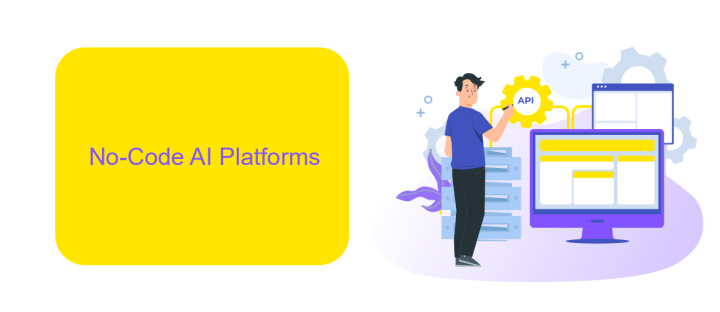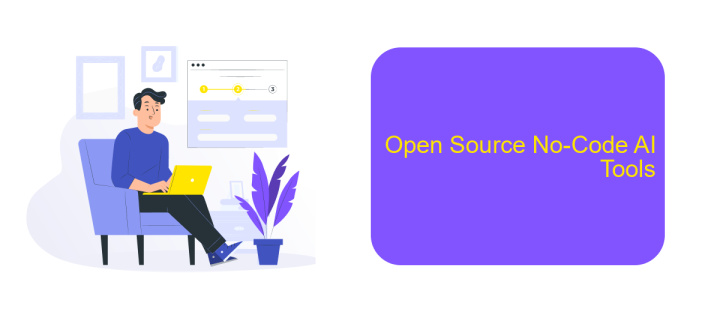No-Code AI Open Source
The rise of no-code AI platforms is democratizing access to artificial intelligence, enabling individuals without technical expertise to build powerful AI solutions. Open-source no-code AI tools are at the forefront of this movement, offering customizable, cost-effective, and collaborative options for developers and non-developers alike. This article explores the benefits, challenges, and future prospects of no-code AI in the open-source ecosystem.
Introduction
The rise of No-Code AI platforms has revolutionized the way individuals and businesses approach artificial intelligence. By eliminating the need for extensive programming knowledge, these platforms empower users to create complex AI models and workflows with intuitive, user-friendly interfaces. This democratization of AI technology is fostering innovation across various industries, from healthcare to marketing.
- Ease of use: No-Code platforms offer drag-and-drop interfaces, making AI accessible to non-technical users.
- Cost-effective: Reduces the need for specialized AI developers, cutting down on development costs.
- Rapid prototyping: Enables quick iteration and testing of AI models, accelerating the development process.
- Integration capabilities: Services like ApiX-Drive facilitate seamless integration with existing tools and databases.
As the landscape of AI continues to evolve, No-Code solutions are becoming increasingly vital. They not only lower the barrier to entry but also enable more diverse participation in AI development. With tools like ApiX-Drive, businesses can easily integrate AI functionalities into their workflows, driving efficiency and innovation without the need for extensive technical expertise.
No-Code AI Platforms

No-Code AI platforms are revolutionizing the way individuals and businesses interact with artificial intelligence by eliminating the need for traditional coding skills. These platforms offer intuitive drag-and-drop interfaces, pre-built models, and easy-to-use tools that empower users to create complex AI solutions without writing a single line of code. This democratizes AI technology, making it accessible to non-technical users and enabling faster development cycles.
One of the key advantages of No-Code AI platforms is their ability to seamlessly integrate with various services and applications. For instance, ApiX-Drive is a service that simplifies the integration process, allowing users to connect their AI solutions with multiple platforms effortlessly. By using ApiX-Drive, users can automate workflows, synchronize data across different systems, and enhance the overall functionality of their AI projects. This level of integration ensures that AI solutions are not only easy to build but also highly adaptable and scalable.
Benefits and Limitations of No-Code AI

No-Code AI platforms offer numerous benefits, making AI accessible to a broader audience without requiring extensive programming knowledge. These platforms enable rapid prototyping and deployment, allowing businesses to quickly implement AI solutions and iterate based on real-world feedback. Moreover, they often come with pre-built integrations and user-friendly interfaces, reducing the time and cost associated with traditional AI development.
- Accessibility: Allows non-technical users to build AI models.
- Speed: Rapid development and deployment of AI solutions.
- Cost-Effective: Reduces the need for specialized AI developers.
- Integration: Easy integration with other tools and services like ApiX-Drive.
However, No-Code AI also has limitations. These platforms might not offer the same level of customization and flexibility as traditional AI development. They may also be less efficient in handling complex, large-scale AI projects. Additionally, there is often a dependency on the platform provider for updates and support, which could be a bottleneck for some businesses. Despite these limitations, No-Code AI remains a powerful tool for democratizing access to artificial intelligence.
Open Source No-Code AI Tools

Open source no-code AI tools are revolutionizing the way individuals and businesses create and deploy artificial intelligence solutions. These tools eliminate the need for extensive programming knowledge, making AI accessible to a broader audience.
With a variety of open source no-code AI platforms available, users can easily build, train, and deploy models without writing a single line of code. These tools offer intuitive interfaces and pre-built templates, simplifying the AI development process.
- TensorFlow.js: A library for machine learning in JavaScript.
- Orange: A data visualization and analysis tool for beginner data scientists.
- KNIME: An open-source platform for data analytics, reporting, and integration.
- ApiX-Drive: A service that helps integrate various applications and automate workflows, enhancing the functionality of no-code AI tools.
By leveraging these tools, users can focus on solving problems and innovating rather than getting bogged down by technical details. The open-source nature of these platforms ensures continuous improvement and community support, fostering a collaborative environment for AI development.


Future of No-Code AI
The future of No-Code AI is poised to revolutionize the way businesses and individuals interact with technology. As the demand for AI-driven solutions continues to grow, no-code platforms are making it easier for non-technical users to create and deploy sophisticated AI models. These platforms are democratizing access to AI, enabling users to automate tasks, analyze data, and make informed decisions without needing to write a single line of code. This shift is not only accelerating innovation but also reducing the barrier to entry for small businesses and startups, allowing them to compete with larger enterprises.
Integration with other services will be a key factor in the success of No-Code AI platforms. Tools like ApiX-Drive are essential in this ecosystem, as they simplify the process of connecting various applications and services. ApiX-Drive enables users to automate workflows by integrating AI models with their existing software stack, ensuring seamless data transfer and real-time updates. As No-Code AI continues to evolve, the ability to easily integrate and customize these solutions will become increasingly important, driving further adoption and innovation in the field.
FAQ
What is No-Code AI?
Who can benefit from No-Code AI platforms?
How secure is No-Code AI?
Can No-Code AI be integrated with other tools and services?
What are some common use cases for No-Code AI?
Do you want to achieve your goals in business, career and life faster and better? Do it with ApiX-Drive – a tool that will remove a significant part of the routine from workflows and free up additional time to achieve your goals. Test the capabilities of Apix-Drive for free – see for yourself the effectiveness of the tool.

